In August 2022, we explore Thüringen. After having walked to the castle Burgk in the morning, we visit Schleiz in the afternoon.
Schleiz, the residence of yet another German principality
Schleiz was the residence of the former principality Reuss-Schleiz. Located on the hill, the two towers of the castle dominate the old city.
In the 18th century, the Reuss-Schleiz reconstructed the castle in Baroque style. Johann Sebastian Bach performed here in 1721. The castle was destroyed by a fire in 1837, was rebuilt again and was definitely destroyed in the bombings of the Second World War.
The old mint is a museum today, closed on Mondays, as it is often the case.
Born at Schleiz in 1682, Johann Friedrich Böttger invented the porcelain for Europe.
In the years 1869-1876, Konrad Duden directed the high school of Schleiz. We all know the dictionary for German spelling that he initiated.
Today, Schleiz is known for the “Schleizer triangle”, one of the oldest German motor sports racetracks.
Saint Mary’s Mountain Church – sumptuous Baroque and an enthusiastic guide
Saint Mary’s Mountain Church (Bergkirche Sankt Marien) is located on another hill north of the city. In the 12th century, there was a Romanic church here. In the late 15th century, the church was rebuilt in late Gothic style.
The plate near the door says “open”. A lady approaches us. “Do you want to visit the church?” She is guarding the church, while it is open. She joins us and fills the church with her enthusiasm. It is always a great pleasure to meet someone as enthusiastic and friendly as she was.
The ribbed vaults from the 15th century reflect the Gothic style.
Inside, the church has been decorated in sumptuous Baroque style in the 17th century, by Paul Keil. The organ, originally from 1445, has been renewed again and again, and the organ wings were painted in 1620, also by Paul Keil.
In 1896/97 the church was renewed and repainted inside. At that time, the vaults have been adorned as a “sky meadow”, taking into account some remains of the Gothic frescos.
The altar was completed in 1635. Maria and John flank the cross.
The church is an aristocratic burial site, as the so-called Epitaph of Burgk shows. The carved figures represent the noble family of Heinrich II Reuss von Plauen zu Burgk (1608-1639) and his wife Magdalena von Putbus. Above them is the sky with bulging clouds, also carved from wood. To the right and left, two angels guard the children that had died early.
From behind, from the belfry chapel, I look at the hats and wigs of the family Reuss. Very unique, I have never seen anything like that in a church.
Our guide is proud of this Epitaph, carved between 1642 and 1706.
In the belfry chapel, we admire the late Gothic sarcophagus of Henry XII, the middle, of Gera at Schleiz and Lobenstein (1438-1500).
His dog rests with him, and he holds the coat of arms with the lion.
Our guide tells us proudly: “This is the most valuable artefact in our church.”
Across the family Reuss zu Burgk is the loggia, where the counts prayed discretely.
Anna Dorothea Slevogt died in childbed in 1686. She was young. Her family dedicated this epitaph with the Deposition from the Cross to her.
Her husband, Professor Slevogt, dedicated a second epitaph to her. Our guide said, he did not want to be considered as mean.
This is the place where the preacher stood (in old German: “Pfarrstand”).
The roof carries the good shepherd Christ, flanked by John the Baptist and Petrus. Behind them is the vineyard. The carved figure carrying harvested grapes on his back is the only one left from a series of workers at the vineyard. The other figures were stolen after 1990. Since then, the community has opened the church only with a guard, our guide tells us sadly. How can someone be so rude and steel the decoration in a church?
Behind the preacher’s stand is a wall with portraits of men full of dignity. They are the former preachers of this church.
The friendly and enthusiastic guard and guide has made visiting Saint Mary’s Mountain Church a very special experience – thank you.
Good-bye Schleiz
We return to our hotel and enjoy the carefully prepared meal – trout and zander. I have a glass of wine from Bad Sulza.
Tomorrow we will leave Saalburg. We have booked a room at Eyba near Saalfeld as a basis to explore the cities along the so-called Via Regia, such as Weimar and Erfurt. On the way to Saalfeld, we will visit the Plothener Teiche (ponds of Plothen).
Sources
- Wikipedia about Schleiz https://de.wikipedia.org/wiki/Schleiz
- “Die Bergkirche Schleiz”, Schnell+Steiner Regensburg 2008
- Heidi Schmitt, “Thüringen Reiseführer”, Michael Müller Verlag 2020
- Dina Stahn, “Bädeker Reiseführer Thüringen”
- Hans Müller, “Thüringen”, Dumont Kunstreiseführer 1998, p. 199ff
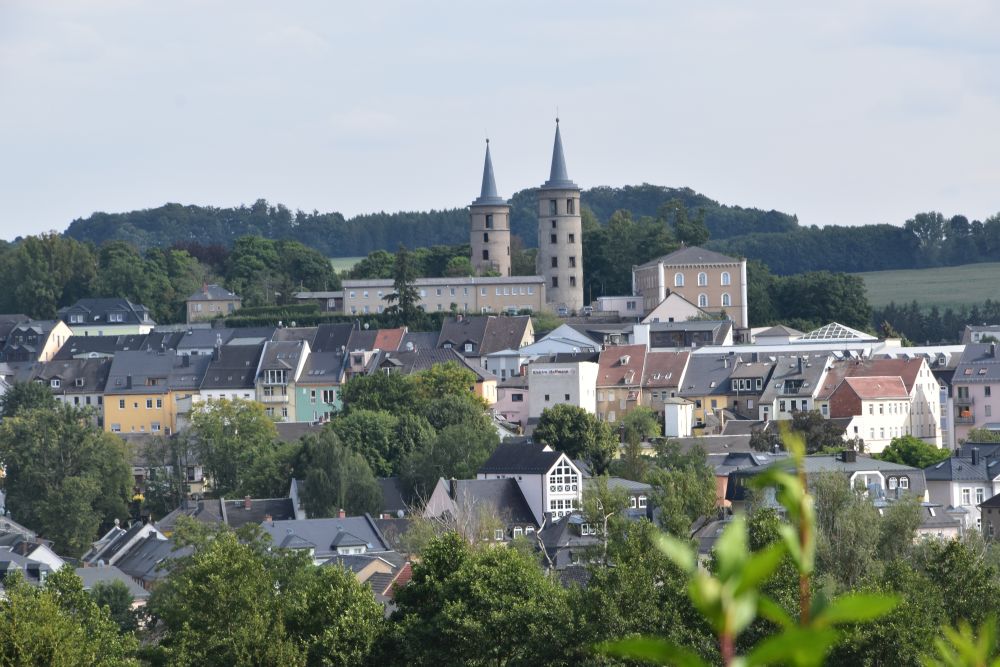
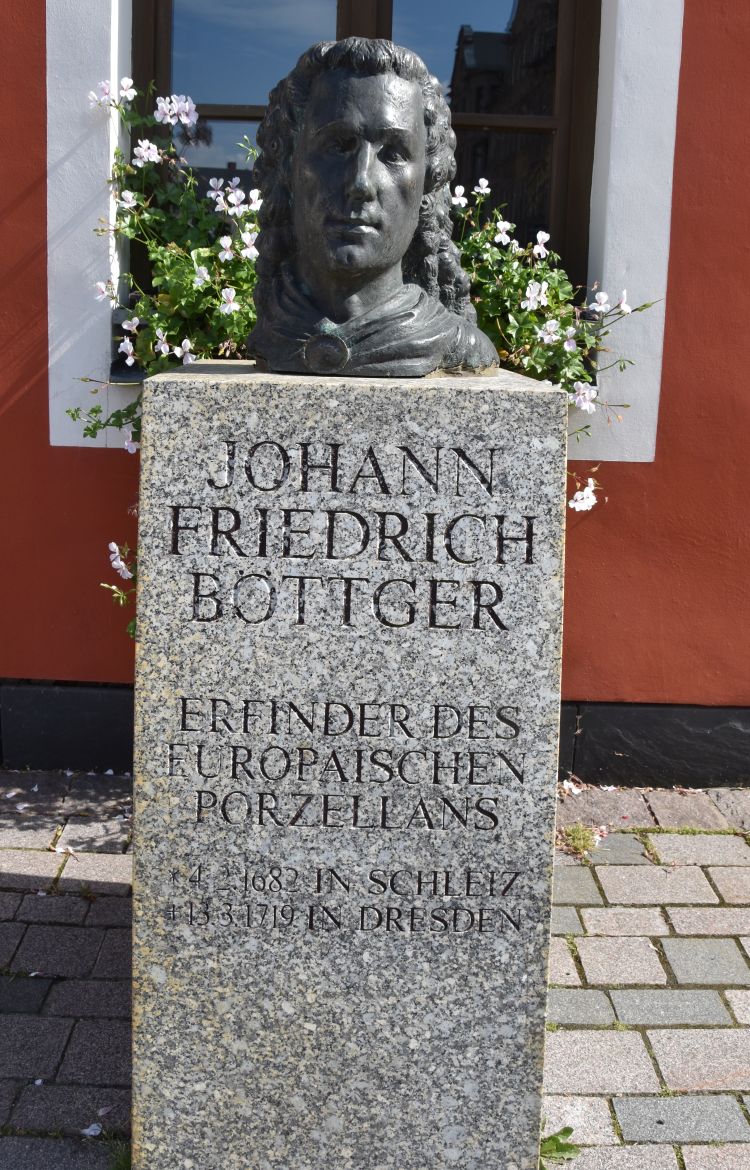
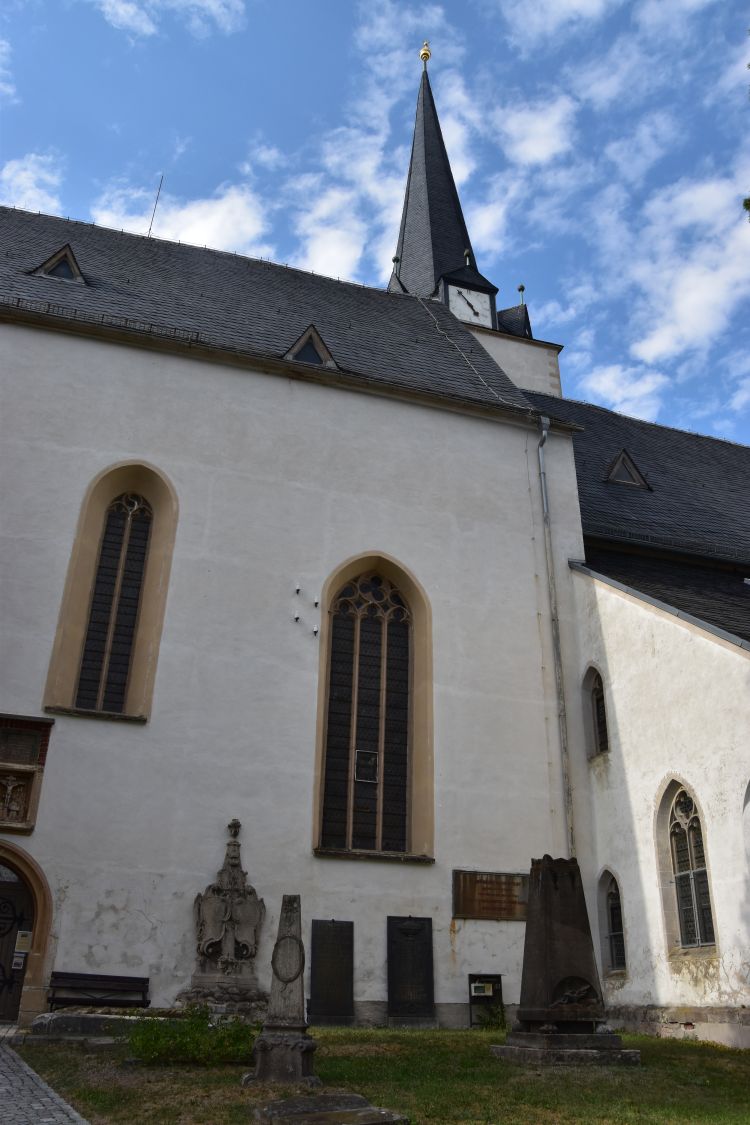
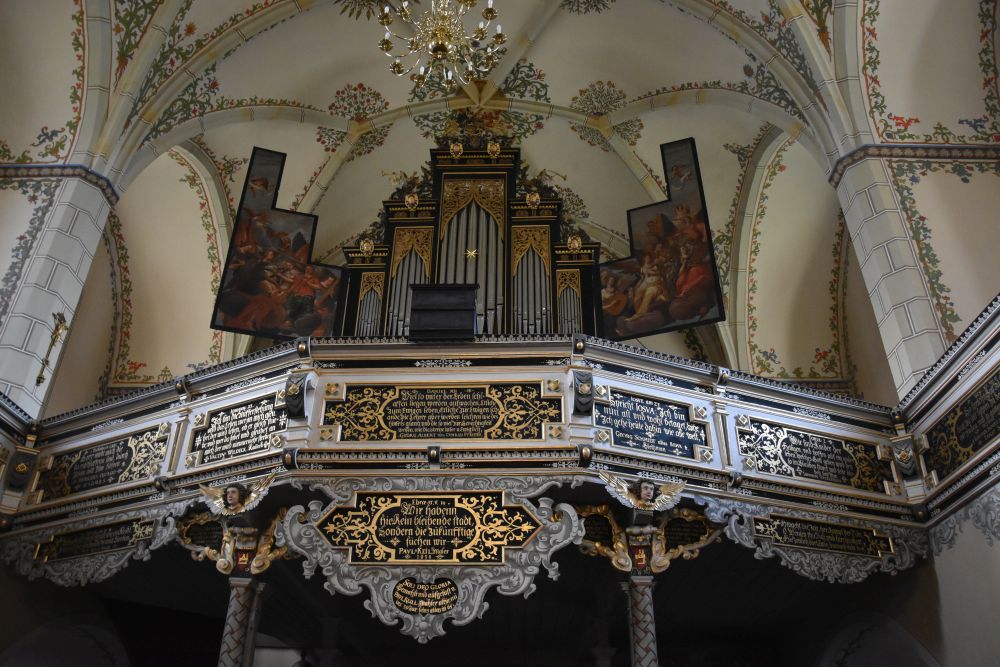
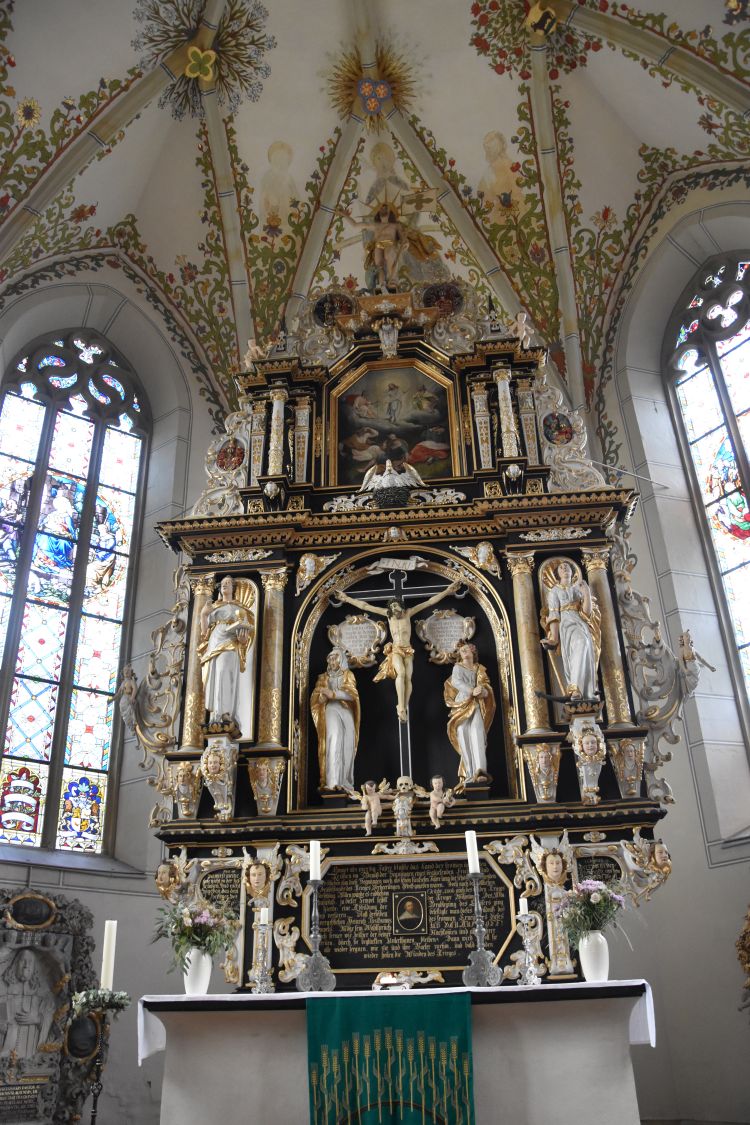
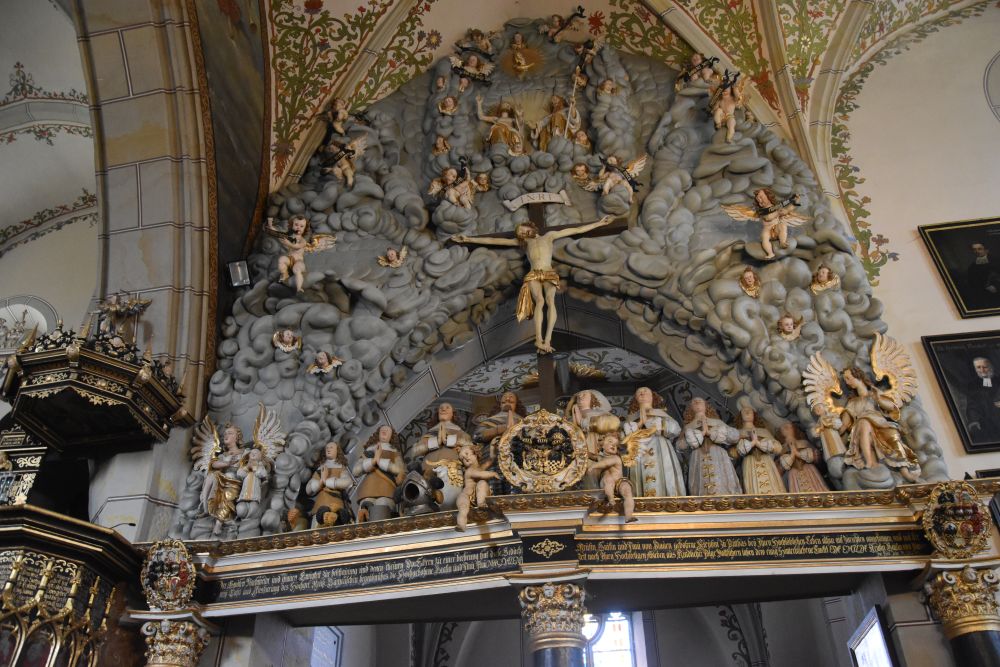

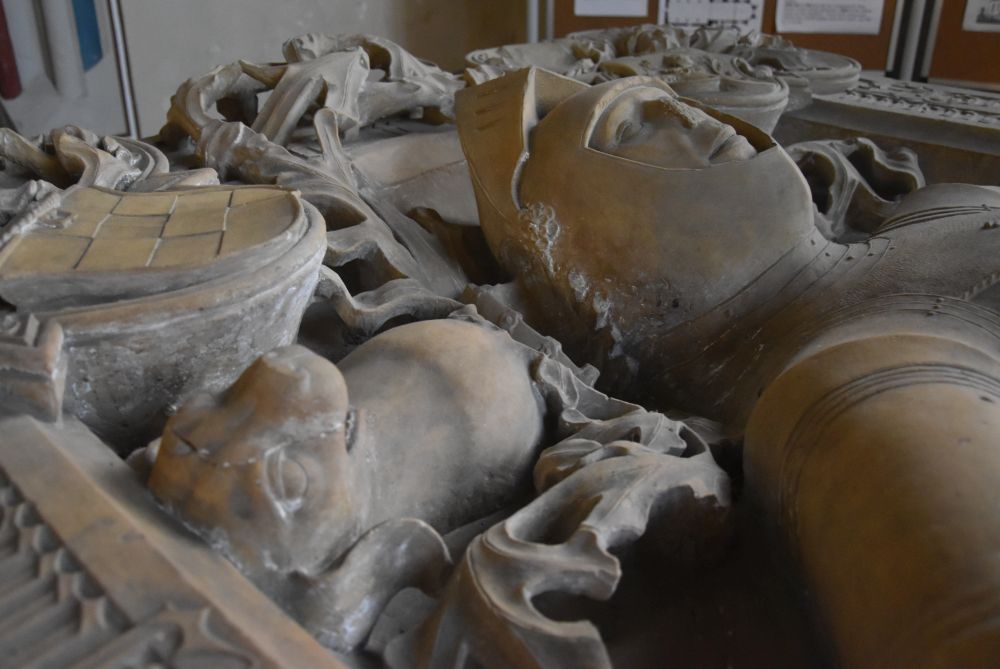
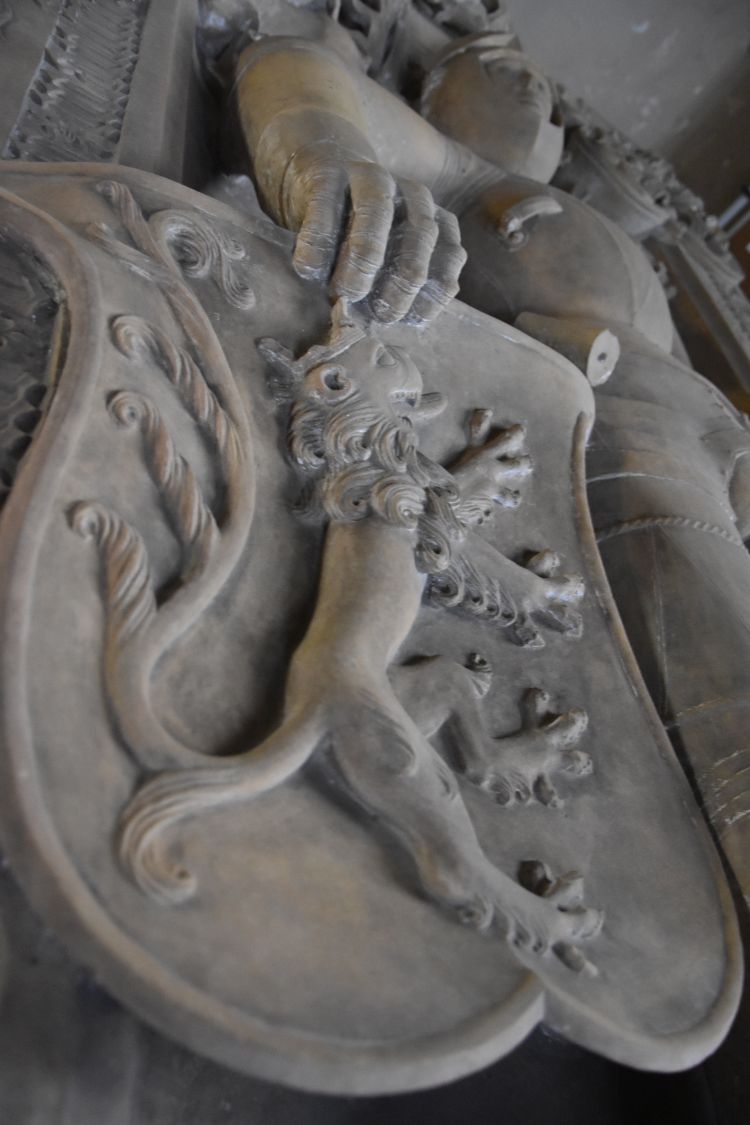


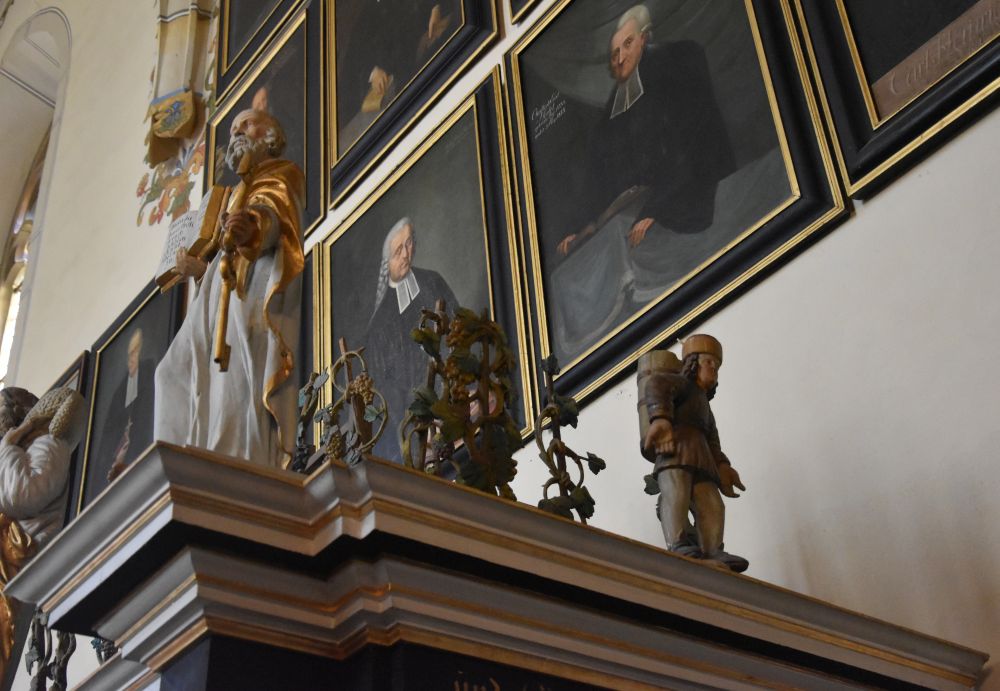
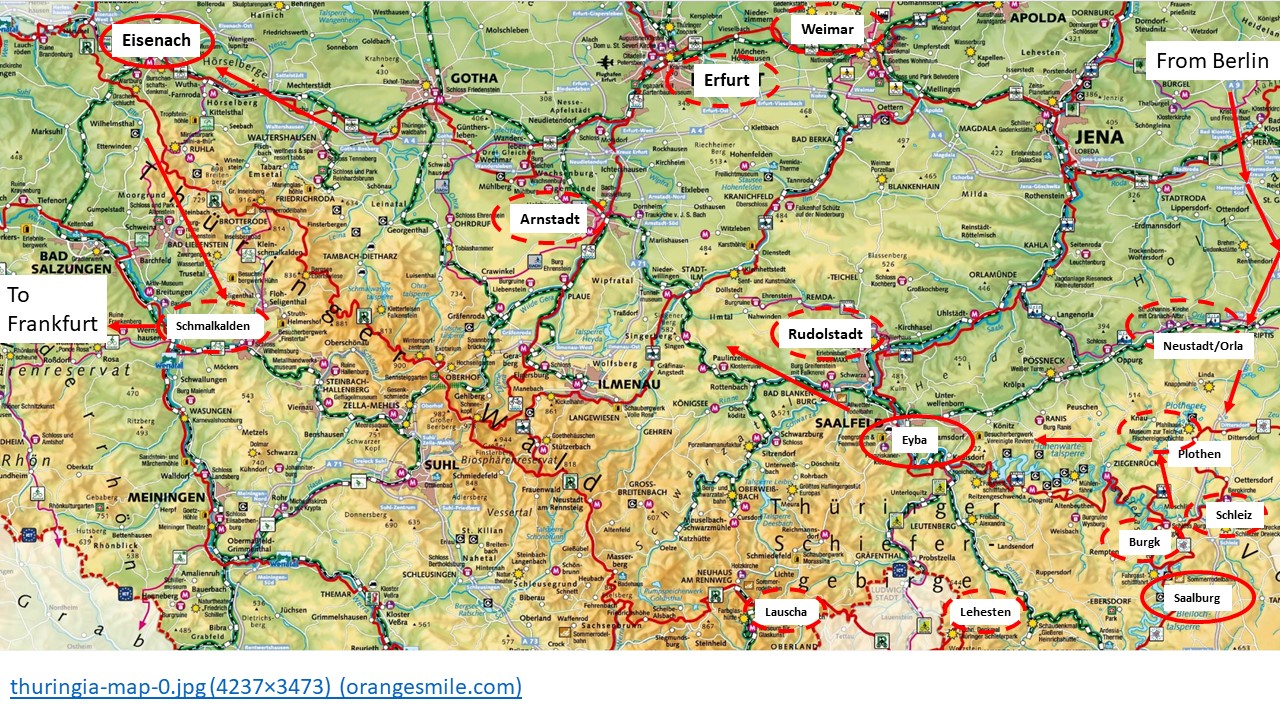
What a sumptuous church ! Thank you for the virtual tour.
[…] 2022, we explored Thuringia. We have already been at Neustadt an der Orla, Saalberg with Burgk and Schleiz, Plothen with its ponds, the dams of the upper Saale, and […]
[…] and commented about the Heidelberger Platz), Thuringia with Neustadt an der Orla, Castle Burgk, Schleiz, Plothener Teiche (ponds), along the dams of the upper Saale, Lehesten, Lauscha, Weimar, […]